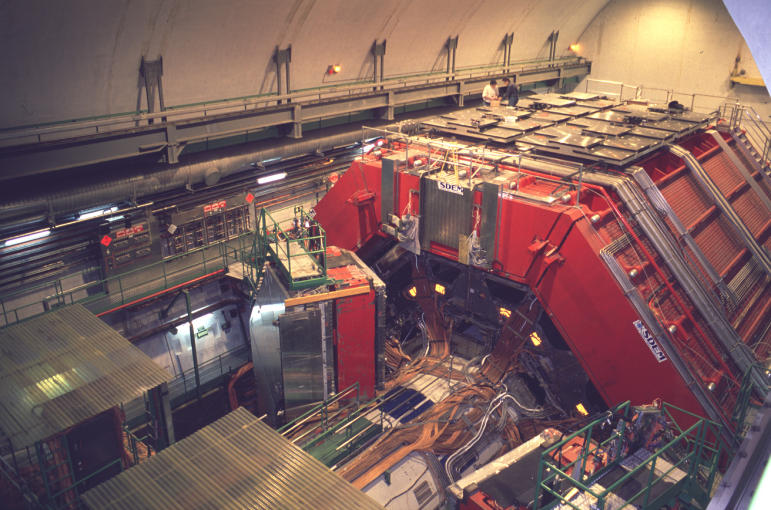The Layers of a Detector
Such detectors are frequently called vertex detectors because they are
placed around the collision point, or vertex, from which new particles
emerge.
The vertex detector is surrounded by more tracking detectors whose
job is to follow the tracks of emerging particles. These do not need to
be so precise as the vertex detector because the density of tracks is
lower as the particles fly away from the collision.
Beyond the tracking detector are detectors for measuring the particles'
energies. A variety of different techniques is used to build these so-called
calorimeters but all rely on the basic principle of stopping the particles
in a dense medium.
Finally, the outermost layer has the specific task of detecting
particles called muons. These are the only detectable particles able
to punch their way through the calorimeter and escape the detector
altogether.
Most experiments have gigantic cylindrical magnets called solenoids
embedded inside them. In magnetic fields, charged particles follow
curved paths. By measuring the curvature of the track as seen by the
tracking detectors, physicists can calculate the momenta of the
particles. The straighter the track, the higher the momentum. Also,
the direction of the curved path, clockwise or anticlockwise,
reveals the sign of the charge of the particle.
Particle Physics Education CD-ROM ©2001 CERN




